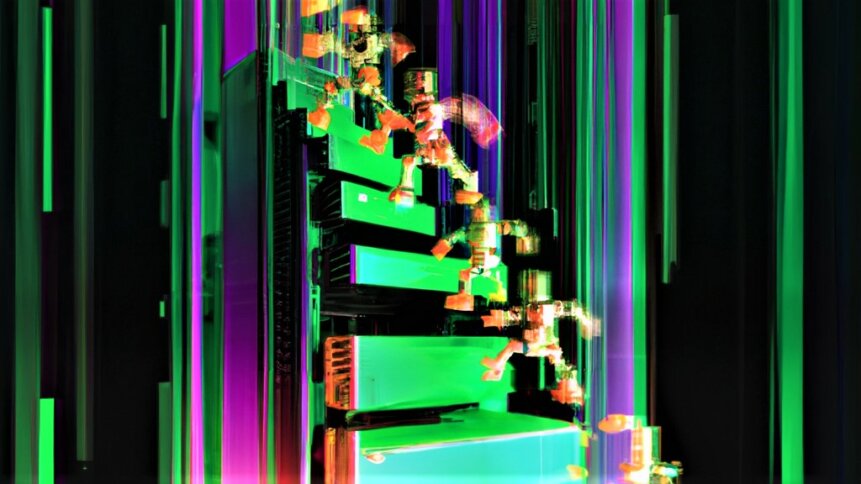Industrial applications of quantum computing add up for D-Wave

|
Getting your Trinity Audio player ready...
|
• Quantum algorithms optimize container logistics at Port of Los Angeles, US
• Industrial applications of quantum computing more accessible to clients
• Customer list growing as case studies highlight advantages to firms
D-Wave is keen to stress that users don’t have to wait for future developments to benefit from quantum computing. And the North American firm, which has been commercializing devices for decades, has multiple examples of enterprise clients using quantum computing to optimize business operations. For example, PayPal has used systems to accelerate fraud detection. And there’s now a long list of global companies using quantum bits (qubits) to rapidly solve complex problems, emphasizing the many industrial applications of quantum computing.
To help commercial users understand just how effective quantum computing can be at addressing industrial applications, D-Wave works with customers through its professional services division. And the firm’s revenue is split between charges for those engagements and quantum computing as a service (QCaaS), which enables users to run their production applications on the latest hardware.
Naturally, as more users get up to speed on the possibilities, D-Wave expects to see a larger share of its revenue come from QCaaS – possibly as high as 90% within five years. And the company’s quantum cloud service, dubbed Leap, is available in 39 countries, with users having run more than 50 million problems on its Advantage quantum annealing architecture since September 2020.
D-Wave’s Q1 2023 results show that revenue derived from commercial customers is up by 30% as firms explore industrial applications of quantum computing. And looking at the client list gives a snapshot of the types of sectors that are benefiting from the power of qubits to quickly determine the most favorable solution to industrially relevant problems by considering a huge number of permutations in parallel.
Industrial applications of quantum computing
Besides the already mentioned PayPal, high-profile quantum computing customers include Volkswagen, DENSO, Johnson and Johnson, GlaxoSmithKline, POLARISqb, NEC Corporation, Mastercard, Deloitte, and Save-On-Foods – to give just a few examples. And what’s attracting industrial clients is the capability of quantum computers to solve optimization problems.
“These are things like employee scheduling or autonomous vehicle routing for manufacturing plant for optimization or bin packing containers on ships or on freights to improve supply chain operations or peptide designed for use in new drugs,” explained Alan Baratz, CEO of D-Wave, in an analyst call.
Quantum annealers, as Baratz – who joined D-Wave to run the company’s R&D organization and then, a few years later, took over as CEO – explains, can be thought of as optimization engines. And they are one way of putting physics to work to solve complex computing problems more efficiently. By finding the lowest point across a multidimensional landscape (formulated to capture the details of the industrial task, such as finding the shortest route between logistics hubs) annealers can rapidly point to the lowest energy (or optimum) solution.
Problems are formulated as either an Ising model or a QUBO model, which begs the question – what are Ising and QUBO models? The (very) short answer is that they represent ways of breaking down a real-world problem into something that D-Wave’s quantum computing architecture can solve. And compared with configuring quantum gates (another way of building algorithms out of qubits) they offer a relatively easy on-ramp for exploring the industrial applications of quantum computing
A closer look at the programming model
Taking a closer look at D-Wave’s programming model provides more detail on the setup process. The model features five key elements: qubits (which settle into one of two final end states), couplers (that enable qubits to influence each other), weights (used to influence the likelihood of the qubit’s final state), strengths (a modifier to influence the control that one qubit has on another), and the objective to be minimized by the system.
Other examples of real-world problems that could be optimized include satellite positioning so that there’s no conflict between orbits. Or stock selection to minimize the risk of holding too much of a particular equity. And setting the programming parameters appropriately will favor solutions that users desire (for example, orbits that keep satellites apart) and penalize scenarios to be avoided (such as collisions in outer space).
Annealers will sample from the range of outcomes to present the optimized or lowest energy solution. And D-Wave has a wide range of open-source resources that provide more information, including a problem-solving handbook. Plus, at Qubits 2023, partners shared a range of industrial applications of quantum computing to highlight how customers are using these tools practically.
A great example is how SavantX, a data analytics firm based in the US, has used quantum computing to dramatically improve logistics at the Port of Los Angeles – the busiest container port in North America. In its approach, the team leveraged the power of quantum annealing – expressing the problem of scheduling trucks to collect containers to maximize throughput and minimize the distance travelled by rubber tyred gantry (RTG) cranes, on a multidimensional landscape for optimization. And the results of the exercise are impressive. Thanks to the algorithm, operators were able to double throughput and almost half RTG movement, which is good news for both profits and maintenance.








